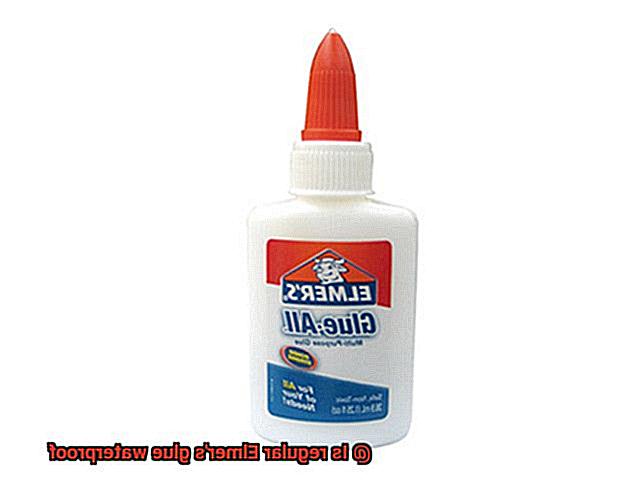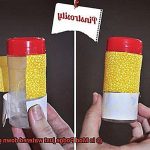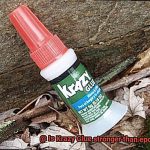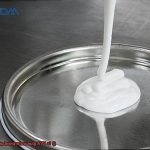Remember the good old days of elementary school, when making a paper mache project was the highlight of your week? And what glue did you use? The one and only Elmer’s glue, of course. But have you ever wondered if this trusty adhesive is waterproof? It’s a question that has puzzled many DIY enthusiasts and crafters alike.
In this blog post, we’re going to dive deep into the topic of whether or not regular Elmer’s glue is truly waterproof. We’ll take a closer look at its chemical makeup and explore how it fares under different conditions. Plus, we’ll discuss some of the best ways to use Elmer’s glue in various projects, from woodworking to papier-mâché.
Whether you’re an experienced crafter or just starting out on your DIY journey, understanding your materials is key. Water resistance is a critical factor to consider when selecting the right adhesive for your project. So let’s get down to business and find out if regular Elmer’s glue can handle exposure to water like a champ.
What is Elmer’s Glue?
Contents
- 1 What is Elmer’s Glue?
- 2 Is Regular Elmer’s Glue Waterproof?
- 3 How to Make Elmer’s Glue More Water-Resistant
- 4 Different Types of Waterproof Glues
- 5 Advantages of Using Waterproof Glues
- 6 Disadvantages of Using Regular Elmer’s Glue in a Wet Environment
- 7 Tips for Using Regular Elmer’s Glue in a Wet Environment
- 8 Conclusion
If you’ve ever needed an adhesive, chances are you’ve come across Elmer’s Glue. Introduced in the 1940s by the Borden Company, this PVA (polyvinyl acetate) glue has become a household name due to its reliability and convenience. But what exactly is Elmer’s Glue?
Elmer’s Glue is a water-based emulsion of polymer particles that dries clear, making it perfect for a wide range of applications. This non-toxic adhesive is easy to clean up with water and can be found in various forms such as liquid glue, glue sticks, and school glue. Liquid glue is ideal for attaching paper, cardboard, and fabric, while glue sticks are perfect for younger children due to their ease of use and reduced messiness. School glue is formulated specifically for classroom use and can be quickly washed off from hands and clothing.
But Elmer’s Glue is not just limited to these applications. Its versatility makes it an excellent choice for various projects such as woodworking, scrapbooking, and even as a sealant for some household items. It is affordable and widely available in most stores that sell art supplies or office products.
While regular Elmer’s Glue may not be waterproof on its own, there are ways to make it more resistant to water. Mixing it with a waterproofing agent such as silicone or acrylic sealer can create a stronger bond that is less likely to break down when exposed to moisture. Alternatively, using specialized waterproof glue like marine-grade epoxy or polyurethane adhesive can provide a long-lasting bond even when exposed to water.
Is Regular Elmer’s Glue Waterproof?
The simple answer is no. Regular Elmer’s glue is not completely waterproof on its own. While it may hold up to some water exposure, it will eventually break down and lose its hold over time.
But don’t despair. There are ways to make regular Elmer’s glue more water-resistant. One method is to mix in a small amount of water-resistant PVA glue, which can help improve the adhesive’s ability to withstand moisture. Another option is to use a clear, waterproof sealant over the top of the dried glue once it has been applied.
It’s important to keep in mind that while these methods may make regular Elmer’s glue more water-resistant, they do not make it completely waterproof. If you need an adhesive that can withstand extended exposure to water or other liquids, you may need to look for a different type of glue specifically designed for that purpose.
Despite its limitations in terms of waterproofing, Elmer’s glue remains a popular choice for many projects due to its easy-to-clean, non-toxic, and affordable nature. It’s perfect for attaching paper, cardboard, fabric, woodworking, scrapbooking, and even as a sealant.
How to Make Elmer’s Glue More Water-Resistant
Elmer’s glue is a go-to adhesive for various crafting and DIY projects, but it has a significant drawback – it’s not entirely waterproof. When exposed to water or moisture, the glue can break down and lose its adhesive properties, causing your project to fall apart. But worry not, there are ways to make Elmer’s glue more water-resistant. Here are five methods to try:
Vinegar
Adding vinegar to Elmer’s glue can help strengthen it and make it more durable against moisture. The acidic nature of vinegar helps create a better bond, which can resist water exposure better. To use this method, mix a small amount of vinegar into the glue before using it.
Silicone sealant
Silicone is known for its water-repelling properties, making it an excellent waterproofing agent for glue. By adding a few drops of silicone sealant to the glue, you can improve its ability to resist water. Make sure to stir the mixture thoroughly before using it.
Cornstarch
Cornstarch acts as a thickening agent and can help create a stronger bond that won’t dissolve when exposed to water. Mixing in a small amount of cornstarch with Elmer’s glue before using it can make it more water-resistant.
Waterproofing agent
Mix Elmer’s glue with a waterproofing agent like silicone or acrylic sealer to create a stronger bond that won’t break down when exposed to water. This method is ideal if your project will come in contact with water or moisture frequently.
Waterproof sealant spray
Once your project is complete and the glue has dried, you can use a waterproof sealant spray to add an extra layer of protection against water and moisture. This method is convenient as you don’t need to mix anything into the glue.
It’s essential to note that while these methods can help make Elmer’s glue more water-resistant, they won’t make it entirely waterproof. If you’re working on a project that will be exposed to prolonged water exposure, it’s best to use a specialized waterproof adhesive instead.
Different Types of Waterproof Glues
With so many types of waterproof glues on the market, it can be difficult to know which one is right for you. Allow me to dive into the different types of waterproof glues available.
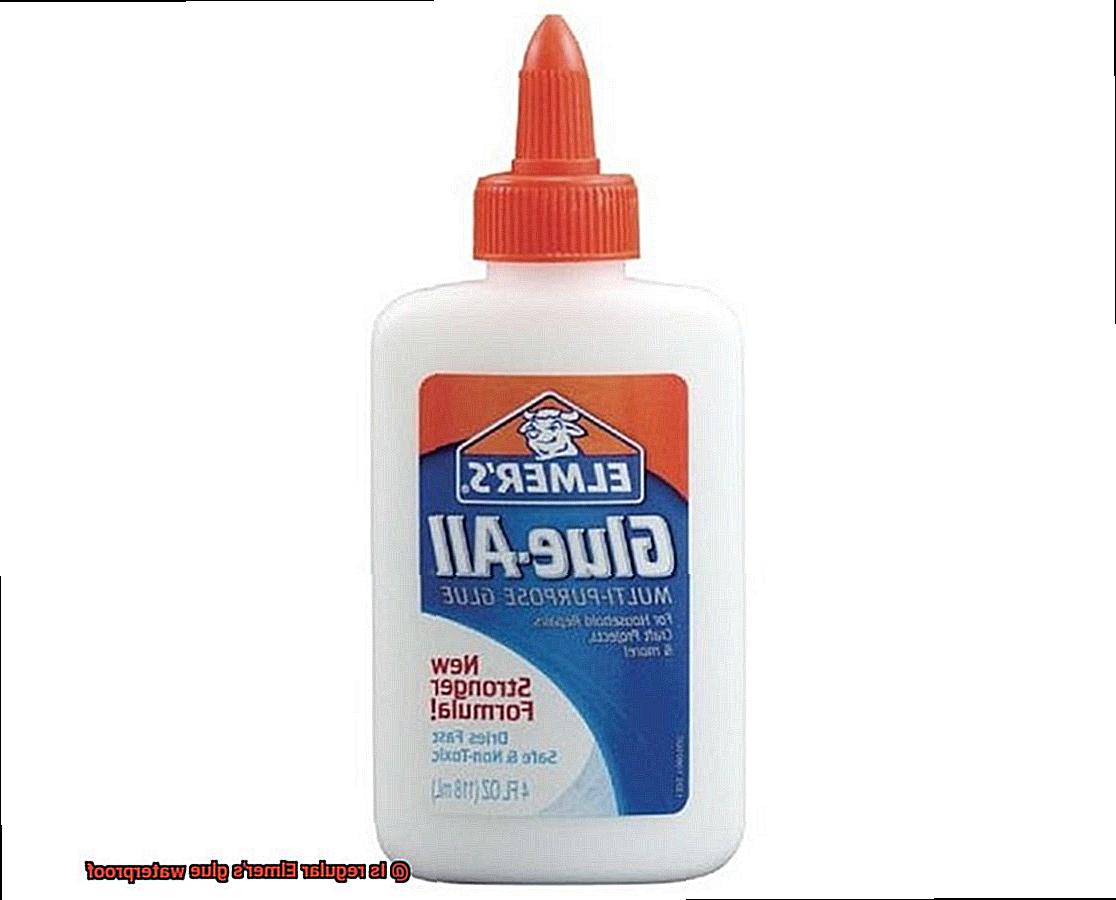
Firstly, let’s discuss polyurethane-based glue. Not only does it create a strong bond, but it’s also resistant to water, heat, and chemicals. This makes it ideal for outdoor projects or areas that may be exposed to moisture. And, to top it off, this glue creates an even stronger hold by expanding and creating a chemical reaction with moisture in the air or on the surface being bonded.
Next on our list is epoxy glue, a two-part adhesive that is perfect for bonding metal, plastic, and wood. It creates a durable bond that can resist water, heat, and chemicals. Just remember to mix the two parts together before use.
If you’re seeking a flexible bond that can handle movement and exposure to water and extreme temperatures, silicone-based glue is your answer. It’s frequently used for sealing and bonding around windows and doors.
Lastly, we have waterproof superglues. These glues are specially formulated to create a strong bond that is resistant to water and other liquids. They’re ideal for bonding plastic, metal, and rubber.
Advantages of Using Waterproof Glues
Waterproof glue is your answer. Its advantages over regular glues are numerous, especially in situations where moisture or water is present.
Firstly, waterproof glue offers increased durability. It’s specially formulated to withstand exposure to water and other harsh elements, making it the perfect choice for damp or wet conditions. The result is increased longevity, making it the go-to adhesive for outdoor projects or items that will be exposed to moisture or humidity.
Another advantage of waterproof glue is its versatility. It can be used for a variety of applications and on a wide range of surfaces, including wood, metal, plastic, and more. With this kind of flexibility, it’s a versatile choice for many different projects.
Waterproof glue is also resistant to moisture. Unlike regular glues, it won’t break down or lose its adhesive properties when exposed to water or high humidity levels. This makes it ideal for sealing around windows and doors or bonding items in a damp environment.
Finally, waterproof glues often have a stronger bonding strength than regular glues. They create a more secure bond between two surfaces, which is important for certain applications. Whether you’re working on a DIY project or engaging in professional work, waterproof glue will ensure that your project stays intact and looks great for years to come.
Disadvantages of Using Regular Elmer’s Glue in a Wet Environment
Before you grab that bottle of regular Elmer’s glue, it’s vital to bear in mind its limitations. Despite being a common adhesive for many indoor applications, it’s not ideal for use in damp or wet conditions.
One of the biggest disadvantages of using regular Elmer’s glue in a wet environment is its lack of waterproofing. When exposed to water or moisture, the glue loses its adhesive properties, leading to poor bonding and even complete dissolution. If you’re planning an outdoor project or working in a humid room, you should consider other options.
In addition to losing its adhesive properties, regular Elmer’s glue takes much longer to dry when exposed to moisture. The glue absorbs the water, slowing down the drying process and making it challenging for the glue to set adequately. This can lead to a sticky or tacky surface, which can ruin your project’s intended finish.
But wait, there’s more. Regular Elmer’s glue also tends to facilitate mold growth when used in a damp environment. Moisture and humidity provide an ideal breeding ground for mold and other fungi to grow. If the glue is not entirely dry or exposed to water regularly, it can become unsanitary and potentially harmful to use while simultaneously weakening its adhesive properties.
Tips for Using Regular Elmer’s Glue in a Wet Environment
Using regular Elmer’s glue in a wet environment can be a challenging task, but with the right tips and tricks, you can make it work. Here are five sub-sections that will expand on how to use regular Elmer’s glue in a wet environment:
Improve Water Resistance by Mixing with Water-Resistant Glue
Regular Elmer’s glue is not waterproof, but mixing it with a small amount of water-resistant glue such as PVA or polyurethane glue can create a stronger bond that can withstand some exposure to water. By using this technique, you can improve the water resistance of your project and ensure that it stays intact for longer.
Apply Multiple Layers for Better Protection
Another way to make your regular Elmer’s glue project more water-resistant is to apply multiple layers of glue. This technique creates a thicker coating that can help protect your project from water damage. It’s important to let each layer dry completely before adding the next one to ensure maximum protection.
Start with a Clean and Dry Surface
Before applying any glue, make sure the surface you’re working on is clean and dry. Any debris or moisture on the surface can compromise the strength of the bond between the glue and the surface. By starting with a clean and dry surface, you’re giving your project the best chance of success in a wet environment.
Allow Time for Drying
To make regular Elmer’s glue work in a wet environment for short-term projects, you need to allow enough time for drying. Apply the glue to a dry surface and allow it to fully dry before exposing it to any moisture. This will give it time to fully bond and harden, making it more resistant to water.
Use a Waterproof Sealant for Extra Protection
Adding a waterproof sealant over your glued surface can provide extra protection against water damage. You can use a spray-on sealant or a clear coat of waterproof paint to help protect your project from water exposure. This technique can be particularly useful for projects that will be frequently exposed to water.
zumPCy2wuKg” >
Also Read: Is Elmer’s Glue Waterproof?
Conclusion
To wrap it up, regular Elmer’s glue isn’t entirely waterproof on its own. While it may endure some water exposure, it will eventually weaken and lose its grip over time. Nonetheless, there are a few ways to boost the water-resistant properties of regular Elmer’s glue. You can mix in a small amount of water-resistant PVA glue or apply a clear waterproof sealant over the top of the dried glue once it has been applied. Alternatively, you could opt for specialized waterproof adhesives like marine-grade epoxy or polyurethane adhesive.
Despite its limited waterproofing capabilities, Elmer’s glue is still a favorite choice for many projects due to its affordability, non-toxicity, and easy-to-clean nature. It is an ideal adhesive for attaching paper, cardboard, fabric, woodworking, scrapbooking, and even as a sealant.
However, if your project requires prolonged exposure to water or other liquids, specialized waterproof adhesives such as polyurethane-based or silicone-based glues are your best bet. These glues offer greater durability and versatility compared to regular Elmer’s glue and can withstand exposure to water and other harsh elements.
In summary, selecting the right adhesive for your project is crucial in ensuring long-lasting results.

